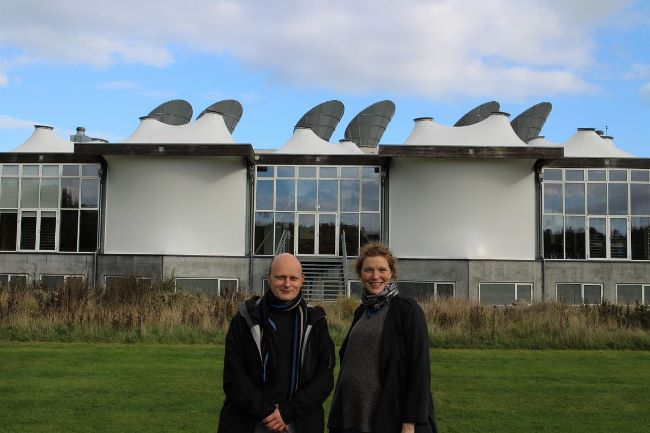Many of the citizens in the Sønderborg region are already engaged in the green transition in their private homes. Smart solutions such as solar panels, heat pumps or electric vehicles are nothing new. But how are these solutions going to work together when the electric vehicle, for example, is being charged with our own solar power? And are we driving less if the sun is not shining? These are some of the questions that the ERA-Net Smart grids+ research project MATCH, which “Project Zero” in Sønderborg is part of, will shed light on.
In order to answer the questions, researchers came from Copenhagen to visit Sønderborg and interview some of our citizens who are already using and combining the smart energy solutions of tomorrow.
"The green transition is also locally driven, and the citizens are going to play a greater role when it comes to producing power, but also when it comes to use the power at the right time", says Senior Researcher Toke Haunstrup Christensen, who visited Sønderborg together with his colleague Freja Friis. Toke continues: "We are trying to find out why people are deciding for smart energy solutions and how these solutions become part of our everyday lives."
Are we changing our behaviour when we have solar panels on the roof and the electric car is parked in the garage to recharge? Are we saving extra on the power consumption when the sun is not shining, and does it become a competition to become self-sufficient? These are just some of the questions that Toke and Freja asked five selected families from the Sønderborg area.
Also on the Danish islands of Fur and Samsø are the citizens at the forefront regarding smart energy solutions. On Fur, Toke and Freja interviewed citizens that combine their solar panels (PVs) with home batteries. On Samsø, it was interesting to hear how the Samsø Energy Academy's innovative and focused efforts on energy conservation can produce results.

MATCH researchers Toke Haunstrup Christensen and Freja Friis in front of the sports centre Diamanten.
Also Project Zero’s initiative “ZEROsport” has caught the researchers' interest as they visited Sønderborg Rowing Club and the sports centre Diamanten (the Diamond) in Fynshav. Both are frontrunners of the ZEROsport program. Are better lighting and better indoor comfort motivating the users of the sports facilities? And are we considering to get solar power on the roof at home, if our sports club is part of initiatives like ZEROsport?
Energy has always been a part of our everyday lives, but in the future we will all be more aware of how to use energy so sparingly and well as possible.
/Nicolas Bernhardi, ProjectZero
